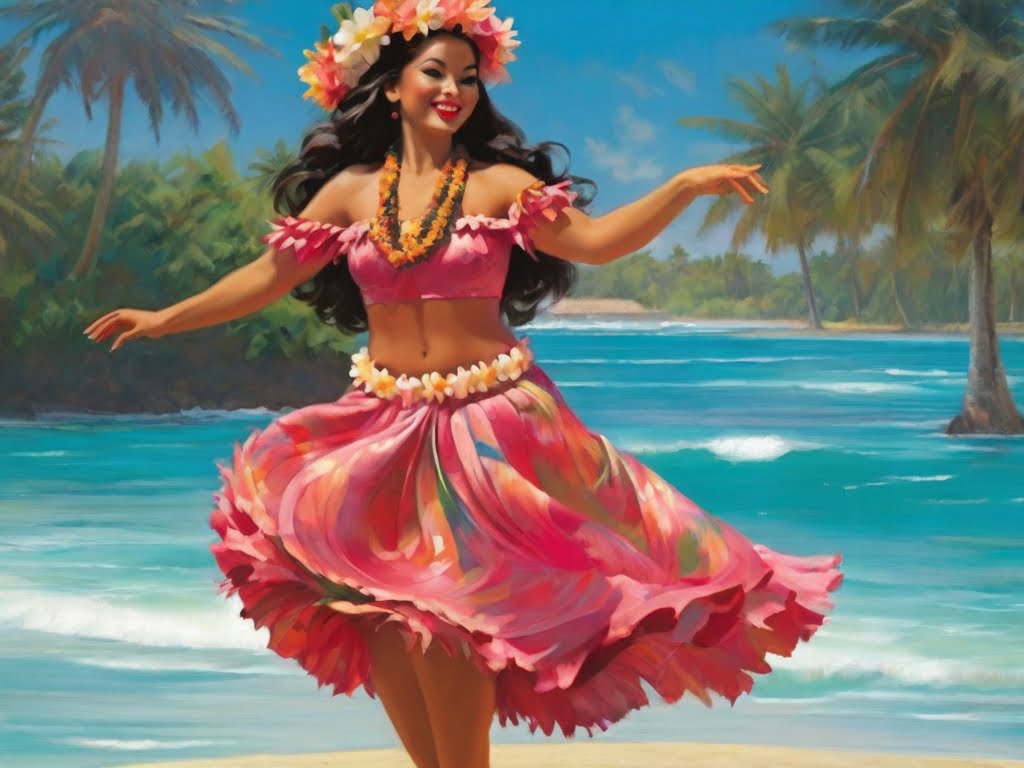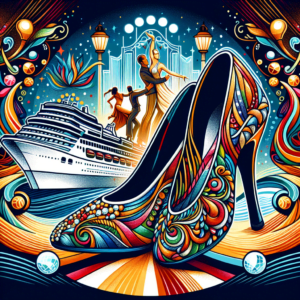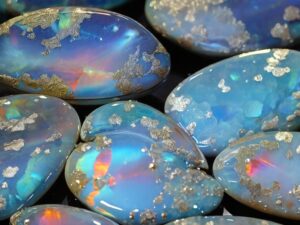Imagine stepping onto the sandy beaches of Hawaii, feeling the warm breeze on your skin as you witness the mesmerizing art of hula dancing. This captivating article will take you on a journey through the history, significance, and diverse styles of this iconic Hawaiian dance form. From its origins as a sacred ritual to its evolution as a dynamic and expressive cultural treasure, hula dancing embodies the spirit of the islands and offers a captivating glimpse into the rich tapestry of Hawaiian culture. Get ready to immerse yourself in the enchanting world of hula dancing and discover the vibrant rhythms that have been passed down through generations.
Table of Contents
ToggleThe History of Hula Dancing
Origins of Hula
Hula dancing is a vibrant and captivating art form deeply rooted in the rich cultural history of the Hawaiian islands. Its origins can be traced back to ancient Polynesia, where dance and storytelling were integral parts of the islanders’ way of life. Hula was originally known as “ha’a” and was performed to honor the gods and goddesses, celebrate important milestones, and convey stories of love, nature, and mythology. These early dances were believed to connect the dancers with the spiritual realm.
Traditional Hula
Traditional hula, known as “Hula Kahiko,” is characterized by its sacred nature and intricate movements. In this ancient style of hula, dancers chant and dance to the rhythms of percussion instruments, such as the ipu (gourd drum) and pahu (sharkskin drum). The movements are deeply rooted in the Hawaiian culture and exhibit grace, precision, and storytelling through gestures and expressions. Traditional hula continues to be revered and practiced by those dedicated to preserving the authentic customs and traditions of the Hawaiian people.
The Influence of Western Contact
The arrival of European explorers and missionaries in the Hawaiian islands during the late 18th and early 19th centuries brought significant changes to hula dancing. Initially, the missionaries condemned hula as sinful and sought to suppress its practice. However, as Hawaii became more influenced by Western customs and culture, a new form of hula emerged: “Hula ‘Auana” or modern hula. Hula ‘Auana incorporated elements of Western music, costumes, and choreography while maintaining the essence of Hawaiian storytelling. This fusion allowed hula to survive and flourish in the face of societal changes, ensuring its continued relevance today.
The Significance of Hula Dancing
Hula as a Cultural Expression
Hula holds immense cultural significance for the Hawaiian people, serving as a powerful means of cultural expression and identity. Through the movements, music, and costumes, hula tells the stories of the Hawaiian people, their connection to the land and sea, and their reverence for the gods and nature. It serves as a medium for preserving and sharing the customs, language, and history of the indigenous people, reinforcing their sense of community, pride, and belonging.
Spiritual and Religious Significance
Hula has deep spiritual and religious roots, often intertwined with ancient Hawaiian mythology and beliefs. The dancers are seen as conduits between the earthly realm and the gods, channeling their energy and embodying their stories. The chanting, music, and rhythmic movements are thought to invoke and honor the spirits, creating a sacred space where the divine and human worlds intersect. Hula is not simply a performance; it is a spiritual connection and a way to keep the ancient traditions alive.
Preservation of Hawaiian Heritage
In addition to its cultural and spiritual significance, hula plays a crucial role in preserving Hawaiian heritage. Many aspects of the dance, such as the language, chants, and traditional costumes, are passed down through generations, ensuring the continuity and authenticity of the art form. Through the dedication of hula practitioners, the stories, traditions, and values of the Hawaiian people have been safeguarded, allowing future generations to understand and appreciate their roots.
Styles of Hula Dancing
Hula Kahiko (Ancient Hula)
Hula Kahiko, also known as ancient hula, represents the traditional form of hula dancing. It encompasses the movements, chants, and instruments used by the early Hawaiians. The dancers wear traditional costumes crafted from natural materials, such as kapa (bark cloth) and feathers. Hula Kahiko requires extensive knowledge of the Hawaiian language, mythology, and cultural practices, and is often performed to honor important events or to convey deep spiritual connections.
Hula ‘Auana (Modern Hula)
Hula ‘Auana, also referred to as modern hula, emerged in the late 19th century and has since evolved alongside Western influences. This style incorporates Hawaiian music, instruments, and costumes, along with contemporary choreography and themes. Hula ‘Auana often features songs performed in English or a blend of Hawaiian and English, allowing for a broader audience to connect with the art form. It is known for its graceful movements, harmonious melodies, and visually vibrant costumes.
Hula Basics and Techniques
Regardless of the style, hula dancing requires dedication, discipline, and an understanding of fundamental techniques. The basic steps of hula involve graceful movements of the feet, hips, and hands, accompanied by storytelling gestures and facial expressions. This intricate combination demands precision in timing, posture, and fluidity of movement. Hula basics are typically taught in a structured manner, allowing beginners to gradually develop their skills and gain a deeper appreciation for the art form.
Learning Hula Dancing
Finding Hula Classes and Workshops
If you feel inspired to learn hula dancing, there are numerous avenues to explore. Many Hawaiian cultural centers offer hula classes and workshops taught by experienced and knowledgeable instructors. These classes often cater to different skill levels, ensuring that both beginners and advanced practitioners find the appropriate instruction. Additionally, online platforms and tutorials provide opportunities to learn hula at your own pace and from the comfort of your home. Research local resources, community centers, and online platforms to find a learning method that suits your needs.
Choosing the Right Instructor
When embarking on your hula journey, finding an experienced and respected instructor is essential. Look for instructors who have a deep understanding of the cultural and historical aspects of hula, as well as the ability to convey this knowledge in a supportive and engaging manner. A skilled instructor will guide you through the techniques, teach you the meaning behind the movements, and foster a sense of respect for the culture and traditions associated with hula dancing. Don’t hesitate to ask for recommendations, attend open classes, or reach out to local hula organizations for guidance in finding the right instructor for you.
The Importance of Cultural Sensitivity
While learning hula, it is crucial to approach the art form with cultural sensitivity and respect. Hula is more than just a dance; it is a representation of a living culture that holds deep significance to the Hawaiian people. Take the time to understand the history, customs, and protocols associated with hula. Respect the traditions by wearing appropriate attire, using proper terminology, and understanding the appropriate times and places to perform hula. By embracing the cultural aspects of hula with reverence, you contribute to its preservation and honor its heritage.
Historical Figures in Hula Dancing
Hilo Hattie
Hilo Hattie, born as Clarissa Haili, was a renowned hula dancer and ambassador of Hawaiian culture. She became known for her hula performances and charming personality, which she showcased in various films, documentaries, and television shows. Hilo Hattie played a significant role in popularizing hula and introducing it to wider audiences outside of Hawaii. Her legacy continues to inspire aspiring hula dancers and serves as a testament to the enduring appeal of this art form.
Iolani Luahine
Iolani Luahine, often referred to as the “High Priestess of Hula,” was a celebrated hula dancer, teacher, and choreographer. She dedicated her life to the preservation and perpetuation of hula, striving to maintain its authenticity and traditional elements. Luahine’s mastery of hula Kahiko brought her international recognition and respect, and she performed for audiences around the world. Her contributions to hula dancing significantly impacted its preservation and encouraged others to embrace the richness of Hawaiian culture.
John Kaimikaua
John Kaimikaua, a prominent figure in the Hawaiian Renaissance of the 1970s, played a vital role in revitalizing hula and restoring its cultural significance. As a dancer, musician, and composer, Kaimikaua embraced the traditional style of hula Kahiko, dedicating himself to preserving its authenticity. He founded the Hālau Hula ‘O Anuanu, a renowned hula school, where he nurtured countless hula dancers and instilled in them a deep appreciation for the cultural and spiritual aspects of this art form.
Hula Dancing in Popular Culture
Hula in Films and Television
Hula dancing has captivated audiences around the world through its depiction in films and television. From classic films like “Blue Hawaii” starring Elvis Presley to modern productions like the animated film “Lilo & Stitch,” hula has left an indelible mark on popular culture. These portrayals often showcase the grace, beauty, and storytelling aspects of hula, introducing its enchanting qualities to viewers who may not have had prior exposure to the art form.
Hula in Music
Hula and music are inseparable partners, each accentuating the other’s beauty and power. Numerous Hawaiian musicians have included hula-inspired songs in their repertoire, contributing to the popularity and dissemination of hula around the world. These songs often incorporate traditional Hawaiian instruments, such as the ukulele and slack-key guitar, and showcase various styles of hula, allowing listeners to engage with the art form through auditory means.
Hula Competitions and Festivals
Hula competitions and festivals provide platforms for hula dancers to showcase their skills, creativity, and passion. These events range from local community gatherings to large-scale competitions held in Hawaii and other locations worldwide. Participants perform both traditional and modern hula, captivating audiences with their precise movements, melodic chants, and elaborate costumes. These competitions and festivals not only celebrate hula as an art form but also foster a sense of camaraderie and shared appreciation among dancers and spectators alike.
Hula Implements and Costumes
The Pu’ili (Split Bamboo Rattles)
The pu’ili, split bamboo rattles, are integral to hula performances and add an auditory element to the dance. The dancers rhythmically strike the pu’ili against their palm and leg, creating a distinctive sound that complements the chanting and music. The pu’ili brings a sense of energy and liveliness to the performance, and its use requires skill and coordination to produce the desired effect.
The Ipu (Gourd Drum)
The ipu, a gourd drum, is another important instrument used in hula dancing. The ipu provides a deep, resonant sound that sets the rhythm for the dancers. It is played by striking the gourd against the ground or using the hand to produce different tones. The ipu’s significance lies not only in its musical contribution but also in its cultural symbolism, representing the connection between the dancers and the land.
The Pahu (Sharkskin Drum)
The pahu, a sharkskin drum, has historical and spiritual significance in hula dancing. Traditionally, the pahu was made from a hollowed-out log covered with sharkskin and played with the hands or sticks. The mesmerizing rhythms produced by the pahu create a powerful ambiance, enhancing the spiritual and energetic aspects of the hula performance. While the use of sharkskin is no longer common due to conservation efforts, the pahu’s role in hula remains a testament to the reverence for nature and the ancient customs.
Hula Dancing Beyond Hawaii
Hula Schools and Groups Worldwide
Hula’s popularity has transcended the shores of Hawaii, with hula schools and groups flourishing around the world. From Japan and South Korea to Europe and the Americas, there is a growing interest in learning and performing hula. These schools and groups often have dedicated instructors who have studied hula in Hawaii or under experienced practitioners. They create a sense of community, allowing individuals from different backgrounds to connect through their shared passion for hula and Hawaiian culture.
International Hula Competitions
International hula competitions attract participants from all corners of the globe, providing a platform for hula dancers to showcase their skills and creativity on an international stage. These competitions often feature both traditional and modern hula categories, allowing dancers to express themselves in various styles. Participating in these competitions allows dancers to expand their horizons, learn from diverse hula practitioners, and contribute to the global recognition and appreciation of hula dancing as a treasured art form.
Hula as a Form of Cultural Exchange
Hula’s global reach has fostered cultural exchange between Hawaii and other countries. As practitioners from different nations immerse themselves in the art form, they not only learn the techniques but also gain a deeper understanding of Hawaiian culture and values. This cultural exchange promotes respect, understanding, and appreciation for diversity, breaking down barriers and fostering connections that span across geographical boundaries. Hula serves as a bridge between cultures, transcending language barriers and bringing people together in celebration of shared humanity.
Health and Fitness Benefits of Hula Dancing
Physical Conditioning
Hula dancing is an excellent form of physical exercise that engages the entire body. The rhythmic hip movements, footwork, and hand gestures involved in hula require coordination, flexibility, and strength. Regular hula practice can improve cardiovascular endurance, muscle tone, and overall physical conditioning, making it a fun and enjoyable way to stay active and improve fitness levels.
Improved Flexibility
Hula involves a wide range of movements that encourage flexibility and increased range of motion. From gentle swaying motions to intricate hand gestures and graceful turns, hula helps to improve joint flexibility and muscular suppleness. Stretching and elongating the muscles through hula movements promote better posture, reduce the risk of injury, and enhance overall body flexibility.
Mental and Emotional Well-being
Engaging in hula dancing not only benefits the physical body but also nurtures mental and emotional well-being. The rhythmic nature of hula, combined with the melodic chants and uplifting music, can have a calming and meditative effect, reducing stress and anxiety. The connection between body, mind, and spirit cultivated through hula can promote mindfulness, self-expression, and a sense of inner peace. Hula also provides a supportive community that fosters connections, friendships, and a sense of belonging.
The Future of Hula Dancing
Challenges in Preserving Traditional Hula
While hula continues to thrive, there are challenges in preserving the authenticity and integrity of traditional hula. The influences of modernity, commercialization, and cultural appropriation pose significant risks to the art form. It is essential for hula practitioners, instructors, and cultural organizations to remain vigilant in their efforts to uphold the cultural sanctity of hula, ensuring that its ancient traditions and values are passed down intact to future generations.
Contemporary Innovations in Hula
As hula evolves and adapts to contemporary times, innovative approaches contribute to its continuous growth and relevance. Contemporary hula choreography, music composition, and storytelling techniques provide new avenues for artistic expression, while still honoring the spirit of traditional hula. These innovations push the boundaries of hula, adding contemporary elements without compromising the integrity and cultural significance of the art form.
Hula’s Continuous Evolution
Hula’s journey has been marked by resilience, adaptability, and a deep reverence for cultural heritage. From its ancient origins to its modern expressions, hula holds a significant place in the hearts of the Hawaiian people and those who embrace its artistry. As it continues to evolve, hula will remain a testament to the strength of cultural traditions and the power of dance to connect people across time and geography. Hula’s enduring legacy ensures that its beauty and significance will be cherished for generations to come.





